I am not even sure about the direction this post is going to take. I had a pretty reasonable blog nearly completed over the weekend, which discussed how Sovol seems to be trying to squeeze as much speed and quality into printers without costing so much that everyone would just spend $150 or $200 more on a Bambu P1P instead.
I knew Bambu was going to be releasing something a few days ago. I had no idea it would pack so many features and so much performance into $300. Bambu has very nearly made almost every single budget 3D printer obsolete.
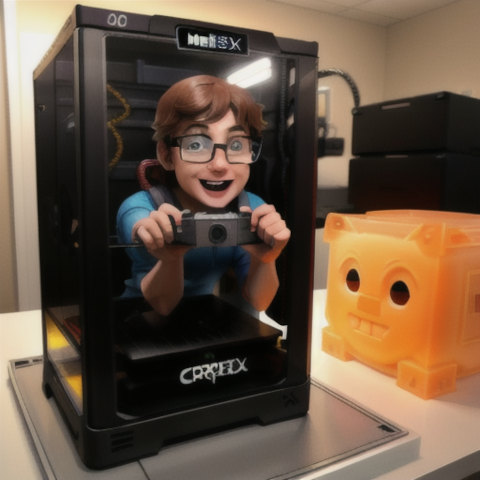
It is a bit early to be shouting about how amazing the Bambu A1 Mini might be, because so far it is only in the hands of reviewers. How the unboxing experience goes for normal people will be much more important, and how they hold up in the long run isn’t a foregone conclusion.
Bambu has a commendable track record thus far. If I were Sovol, Creality, or Prusa Research, I would most definitely be planning for the A1 Mini to be a huge success.
- The Bambu A1 – Do I Regret Buying an A1 Mini a Month Ago?
- My Bambu A1 Mini – The First Six Hours of 3D Printing
- The Bambu A1 Mini – The Best Choice for Your First 3D Printer
- I Bought a Bambu A1 Mini Even Though I Know What I Am Doing
- I Am Tentatively Excited About The Sovol SV08
- The Sovol SV07 and Rethinking My Dislike of V-Wheel 3D Printers
- My journey to a new 3D Printer: the Bambu Lab X1-Carbon at Brian’s Blog
- Adding Hooks or Straps to Your Backpack Just Got a Whole Lot Easier!
The Bambu A1 Mini has set a new standard for budget 3D printers
The Bambu A1 Mini is an astonishingly well-equipped 3D printer for $299, and the A1 Mini with the optional AMS unit that lets you print objects in four colors is an amazing value at only $469. Bambu has managed to include every important next-generation feature that makes the Bambu X1C and the Prusa MK4 such amazing machines.
The Bambu A1 Mini can print a Benchy in 14 minutes. It has strain sensor bed leveling for a perfect first layer just like the Prusa MK4 and Bambu X1C. Unlike the Prusa MK4, the Bambu A1 Mini has fast enough WiFi to upload your gcode in a reasonable amount of time. The Bambu also has automatic flow rate compensation.
If you poke around r/FixMyPrint, you will notice that there are two common problems that make up the vast majority of posts. So many people don’t know how to calibrate their z-offset. The Bambu A1 Mini’s load sensor does this for you. Almost as many people don’t know how to tell if they are over extruding, and the Bambu’s flow rate compensation ought to solve that problem, too.
Should your first printer be a Sovol SV06 for $259? Or is it worth spending $40 more to let the printer solve these two common problems for you? There is absolutely no question in my mind that these two features alone are worth way more than $40, and the 14-minute Benchy is just icing on the cake. Extremely delicious icing.
- Bambu A1 Mini
- My Bambu A1 Mini – The First Six Hours of 3D Printing
- I Bought a Bambu A1 Mini Even Though I Know What I Am Doing
Budget printers are bigger than the Bambu A1 Mini. Does it matter?
When you are shopping for a 3D printer, you likely have particular objects in mind that you want to be able to print. Some subset of you that are reading this want to print large things: a NAS computer case, a cosplay helmet, or huge Gridfinity bins. Size might be the single most important specification of your 3D printer.
I bet you can fit 99% of the objects hosted on Printables on a Bambu A1 Mini. I can count on one hand the number of times in the last three or four years that I wanted to print something that wouldn’t fit on my Prusa MK3S. I could definitely get by with a smaller printer.
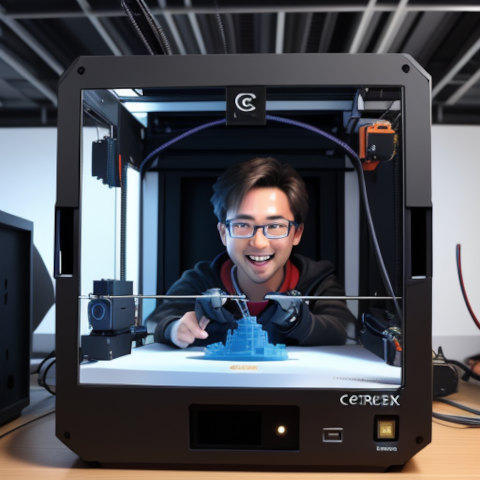
I will always be looking to print the biggest Gridfinity base plates that I can fit on my printer no matter how big my printer is. Whether I am limited to the Bambu A1 Mini’s 180 mms, or I am limited to a Sovol SV06 Plus’s 300 mms, I will still be gluing base plates together.
The advanced features that Bambu has managed to cram into $299 are fantastic. I would think long and hard before choosing a bigger printer over a Bambu A1 Mini.
Bambu has quality control and customer service departments
I love my refurbished Sovol SV06. I paid $169 for it. I set up Marlin’s input shaping to make it able to crank out a clean Benchy in 21 minutes. It is a well engineered, sturdy machine. It is unfortunate that Sovol uses cheap electronics and loud fans, but it was an amazing printer for the price.
If you follow r/Sovol you will see that quite a few people receive broken printers. My suspicion is that the percentage of people unboxing duds is quite minimal, but we have no way to know the actual numbers. What is more important to note is how many of those people complain about Sovol’s customer service.
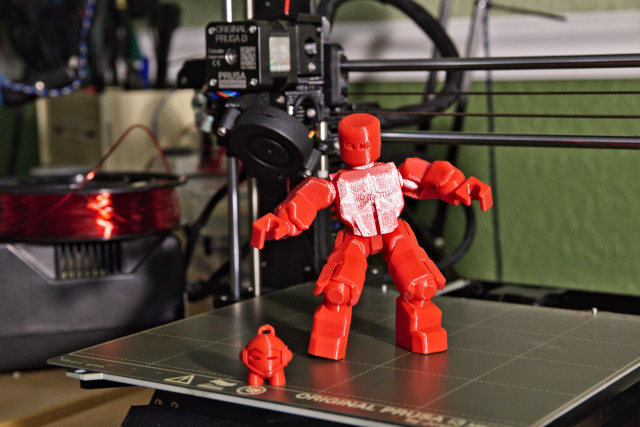
If you are one of the lucky ones who got a good Sovol SV06, then you ought to be in good shape. You might be one of the unlucky few with a bad stepper motor or a control board that fries itself almost immediately. It seems like it may take you several weeks or even a couple of months to get a replacement. Once you get things squared away, though, you should be good for a long time.
This was a reasonable risk and trade off when your options might be a Sovol SV06 for $259, a Bambu P1P for $599, or a fully assembled Prusa MK4 for $1,150. Why bother taking this risk when you can get a better printer from a company that has a well-staffed customer service department?
- My Bambu A1 Mini – The First Six Hours of 3D Printing
- Marlin Input Shaping, My Sovol SV06, and My Twenty-Minute Benchy
- I Bought a Bambu A1 Mini Even Though I Know What I Am Doing
Is speed really all that important?!
It depends. Since tuning the input shaper on my Sovol SV06, I have rarely used my Prusa MK3S. The Sovol is at least three times faster. Why wait when you don’t have to? This is a bit disingenuous to say, because if I didn’t have a faster printer, I would definitely be using the MK3S!
When you are printing small parts once every few days, the speed really doesn’t matter. When you are iterating on a design, the speed is a game changer! A handful of design and printing iterations that may have taken all afternoon before can be done in not much more than an hour now.
Speed is awesome when you need to run long print jobs. A 24-hour print is awful. You’d prefer not to have any power blips. It is better to be nearby to keep an eye on the print, because you certainly don’t want a catastrophe to happen while you are asleep. Cutting that down to less than 8 hours is much more reasonable.
Perfect first layers and flow rate compensation
I already talked about this, but I feel like it is worth repeating. Not having to calibrate my z-offset would save me dozens of minutes every time I set up a new printer, swap a nozzle, or change my build plate. If you have never done this before, Bambu’s bed leveling system will save you hours.
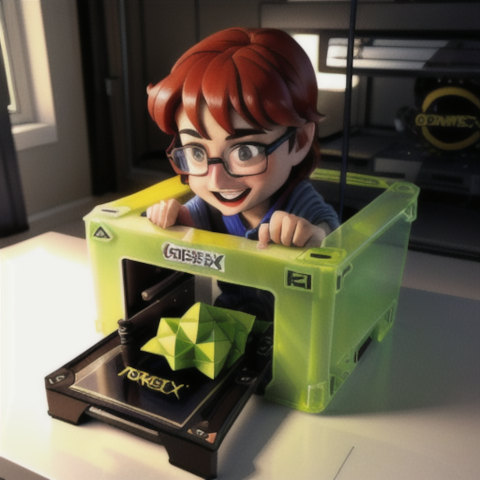
The active flow rate compensation will save you from having problems that you might not even know how to diagnose, and it will save you before you even encounter the problem.
Neither of these features are the game changers that the original automatic bed leveling was, but they are nonetheless huge. I have been printing for nearly a decade, and these features would save me a lot of time and effort. If you are buying your first printer, these features will save you so much headache!
What now for Sovol?
When the Sovol SV06 was released, it was almost too good to believe. The printer cost $259. The printer was nine screws away from being assembled when you open the box. The SV06 is mechanically and electronically comparable to the $750 Prusa MK3S+ kit while being nearly as ready to go as the $1,150 fully assembled Prusa MK3S+.
I was recommending it to friends almost immediately, but I didn’t like that I was recommending something I hadn’t used myself. I ordered a refurbished unit for $169, and I have been using it every few days ever since.
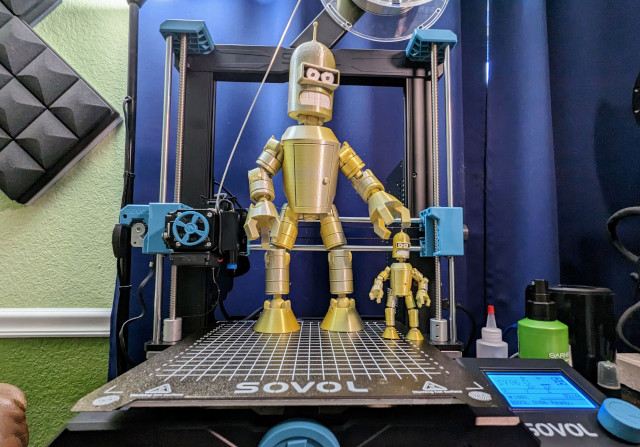
The Sovol SV06, the Prusa MK3S+, and even the Prusa MK4 only have three major items on their spec sheets that the Bambu A1 Mini can’t meet. The SV06, MK3S+, and MK4 are all open source, they all have bigger print surfaces, and they can print more exotic filaments.
The Bambu A1 Mini meets pretty much every other specification, except the A1 Mini is faster and ships with a webcam.
It is easy to recommend rolling the dice on Sovol’s customer service and quality control when the roughly equivalent Prusa MK3S+ costs three or four times as much. It is much harder to make that same recommendation against the $299 Bambu A1 Mini.
It sure looked like Sovol was attempting to make the best set of compromises possible to put a fast, reliable 3D printed in your hands for less than the price of a Bambu P1P. You can nearly buy a pair of Sovol SV07 printers that can crank out a 24-minute Benchy for the price of a Bambu P1P or Bambu P1S. The Sovol SV07 made pretty reasonable compromises to save you $300 here.
It is impossible for me to suggest that you buy a Sovol SV07 for $40 more than a Bambu A1 Mini.
I think it is possible for Sovol to engineer something to compete with the Bambu A1 Mini on price. Prusa has shown that you can print a 17-minute Benchy using linear rods on the Prusa Mini+. If Prusa can sell the Prusa Mini+ for $459, then I bet Sovol can sell something comparable for under $200.
I will be surprised if they can fit a Klipper screen into the budget. If they do, I would expect the price will get too close to that of the Bambu A1 Mini. Why buy a $270 printer from Sovol when you can pay $20 more for a Bambu? I think they would do well if they shipped a Prusa Mini+ shaped printer running Marlin’s input shaper.
The AMS Lite is the killer feature
Multi-color printing is going to make it even harder for Sovol to compete. You only have to pay $170 extra to print in four colors on the Bambu A1 Mini.
If there is even a possibility that I will want to print with multiple colors, why would I ever spend more than $200 on a Sovol printer that will likely never have a multicolor add-on? Wouldn’t it be better to hedge my bets, buy a Bambu A1 Mini, and assume they will sell me the AMS Lite separately at a later date?
A functioning filament changer on a $469 printer than can also crank out a Benchy in 14 minutes is an amazing value.
- My Bambu A1 Mini – The First Six Hours of 3D Printing
- I Bought a Bambu A1 Mini Even Though I Know What I Am Doing
Conclusion
The last two years have been exciting for 3D printing. There’s new competition. New features are showing up pretty regularly. Prices have been dropping so fast! I felt like my Prusa MK3S was a fantastic deal three years ago at $1,111.31. Six months ago, I felt like my refurbished Sovol SV06 for $169 was nearly equivalent to my Prusa MK3S. I know that the refurbished price feels a bit like cheating.
This week, Bambu has managed to pack a heck of a lot of value into both the $299 and the $469 Bambu A1 Mini packages, and they haven’t left much room to for the competition. I am excited to see who Sovol, Creality, and Elegoo respond with in the coming months. I hope they manage to stay competitive!
What do you think? Is Prusa Research in trouble? What about Sovol and Elegoo? Are you happy with your Sovol or Prusa printer? Do you wish you waited a couple of months for a Bambu A1 Mini? Let me know in the comments, or stop by the *Butter, What?! Discord server to chat with me about it!
- The Bambu A1 – Do I Regret Buying an A1 Mini a Month Ago?
- The Bambu A1 Mini – The Best Choice for Your First 3D Printer
- My Bambu A1 Mini – The First Six Hours of 3D Printing
- I Bought a Bambu A1 Mini Even Though I Know What I Am Doing
- I Am Tentatively Excited About The Sovol SV08
- The Sovol SV07 and Rethinking My Dislike of V-Wheel 3D Printers
- Marlin Input Shaping, My Sovol SV06, and My Twenty-Minute Benchy
- My Sovol SV06 — Two Months Later
- Please Don’t Take Apart Your Sovol SV06 To Grease The Bearings!
- My journey to a new 3D Printer: the Bambu Lab X1-Carbon at Brian’s Blog
- Cutting Carbon Fiber Sheets on My Shapeoko CNC
- Refurbished Sovol SV06 at Sovol.com
- Sovol SV06 Plus at Sovol.com
- Sovol SV06 at Sovol.com
- Adding Hooks or Straps to Your Backpack Just Got a Whole Lot Easier!